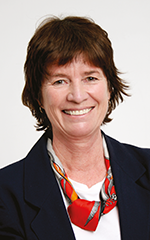

Today is the 55th anniversary of Neil Armstrong becoming the first human to walk on the Moon. It made me think of an interesting report that captured my attention earlier this year. Within the space of four days, two different private American companies recently succeeded in landing their spacecraft on the moon. Intuitive Machines landed a robotic spacecraft called Athena near its south pole. Sadly, Athena tipped onto its side, and with its solar panels pointing in the wrong direction the battery power soon ran out. Four days before Athena’s descent, Firefly Aerospace had better luck and landed Blue Ghost without a hitch in Mare Crisium near the lunar equator. Just weeks before, Japan’s space agency, JAXA landed its SLIM mission with pinpoint accuracy.
These were not showcase missions but serious scientific efforts. They were also paving the way for the return of astronauts to the moon. Athena and Blue Ghost carried a whole range of experiments. Athena’s were focused on hunting for ice, while Blue Ghost looked at the regolith, which is the layer of crushed rock that’s the closest thing the moon has to soil.
I am old enough to remember watching in awe when Armstrong stepped onto the moon in 1969. Yet, the US Apollo missions between 1969 and 1972 were the only missions to land humans on the moon and no one else has done it since, despite the rapid technological advances we have seen. This is due to a combination of political, financial, technical and strategic issues. It’s over half a century later, and the event is still one of the top achievements of humankind.
The computer on board Apollo 11 had 32 KB of RAM, 72 KB of ROM and its processor ran at 0,043 MHz – slower than a digital watch. The latest phones typically have 4 GB of RAM, 512 GB of ROM and a speed of around 2490 MHz. Basically, the iPhone in your pocket has over 100 000 times the processing power of the computer that landed Armstrong on the moon 55 years ago.
Today’s AI and automation are a world away from what Armstrong faced in 1969, when he had to override the Apollo 11 computer during descent to avoid boulders and craters. He later said that landing was a ‘13’ on a scale of one to ten in terms of difficulty, compared to a ‘one’ for walking on the moon. One thing that hasn’t changed is the speed of communications, it’s still the speed of light − about 1,26 seconds from moon to earth; but the content of the transmissions, the quality of the images and the sophistication of the instruments have advanced exponentially.
Back then, space exploration belonged to the superpowers, but now it’s been democratised. Space is no longer a playground for governments. Today, private firms are assisting national agencies and leading missions themselves. As we have seen with SpaceX, spectacular setbacks are now part of the process. Intuitive Machines will learn quickly from Athena’s trip-up. We’re seeing a new kind of resilience. Space aircraft may crash but they still deliver data and complete experiments. Space exploration in the 21st century is a combination of ambition, learning and repeating again − and again.
The pace is heating up. NASA’s Artemis programme aims to return humans to the moon by the end of the decade. China is planning its first crewed lunar landing for 2030; and private companies like SpaceX are building the infrastructure to support sustained lunar activity. We are entering a new era of exploration.
By the end of the year, at least three more private USA landers are scheduled to launch, with names like Blue Moon from Jeff Bezos and Griffin from Astrobotic Technology, and a third attempt from Intuitive Machines. Japanese and Israeli firms also have landers in the pipeline. This is the result of NASA’s deliberate shift toward working with commercial contractors. It now relies on companies like SpaceX not just for launches, but also to design and build future space station components. Fixed-price contracts and commercial competition are replacing the old cost-plus model, and the resulting lower costs and faster delivery are transforming the industry.
This is all very exciting, but I also have a slightly uneasy feeling. Is the moon at risk of becoming overcrowded? Will we some day look up and see a traffic jam, like the queues we see in photos of Everest? When I watch the moon set over the mountains from my garden I want to believe it’s untouched. I hope this new age of exploration doesn’t come with lunar litter and commercial clutter.
| Tel: | +27 11 543 5800 |
| Email: | [email protected] |
| www: | www.technews.co.za |
| Articles: | More information and articles about Technews Publishing (SA Instrumentation & Control) |

© Technews Publishing (Pty) Ltd | All Rights Reserved